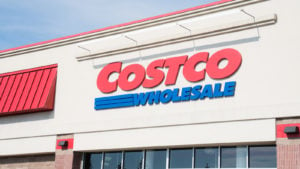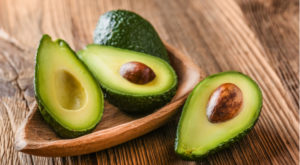Food stocks have regained some favor in 2022. Over the past few years, many investors passed over the sector. After all, food tends to be a slowly growing industry that may not hold the glamor or appeal of, say, tech stocks. However, food stocks have dramatically outperformed many other sectors in 2022. That isn’t too surprising because the food and beverage sector is known for being a safe harbor during market storms. Since that’s the case, it’s a great time to look at the seven hottest food stocks.
But there’s a lot more to food stocks than just their defensiveness. Many of the leading food companies have dramatically outperformed versus the S&P 500 over the longer term. The combination of food makers’ recession-resistant businesses, high profit margins, and strong brands tend to lead to superior returns.
| HSY | Hershey | $233 |
| PEP | PepsiCo | $179 |
| HRL | Hormel Foods | $45.60 |
| MCK | McCormick | $368 |
| BRBR | Bellring Brands | $24.65 |
| AVO | Mission Produce | $15 |
| COST | Costco | $466 |
Hershey (HSY)

Confection and snack maker Hershey (NYSE:HSY) has been one of 2022’s more surprising winners. The shares have rallied 21% in 2022 and reached new all-time highs recently.
The company’s success isn’t hard to explain. The American chocolate sector has limited competition, with Hershey and Mars holding most of the U.S. chocolate market. Additionally, people have strong taste preferences when it comes to chocolate. That generally protects firms like Hershey from facing cheaper, store-brand competition. That, in turn, has allowed Hershey to hike prices quickly during the current inflationary shock, protecting the firm’s profit margins.
Hershey’s best-in-class earnings results and operational momentum have allowed HSY stock to stand out even during this bear market. In addition to Hershey’s strong chocolate business, it has acquired several snack brands in recent years which give the company additional growth avenues, particularly with younger consumers.
Pepsico (PEP)

Most investors probably know Pepsico (NYSE:PEP) for its soft-drink business. However, there’s more to Pepsico than just soda. The company also owns Frito-Lay, which is one of the world’s most dominant snack businesses.
The addition of chips and other savory snacks has given Pepsico a tremendous second lever for growth. There are natural synergies from owning both beverages and snacks, in terms of supply chains, marketing, and cross-promotion. More broadly, the snack business has given Pepsico a clearer long-term outlook than Coca-Cola (NYSE:KO), since Pepsico is less reliant on sugary-drink sales for its profits.
Pepsico has shown tremendous consistency over the years. PEP stock has appreciated at an annualized rate of over 11% in the past three, five, and ten years, respectively. Pepsico is rarely flashy, but the company consistently generates value for its shareholders, leading to strong and steady returns by PEP stock.
Hormel Foods (HRL)

Hormel Foods (NYSE:HRL) is a Minnesota-based packaged foods company that was founded way back in 1891. The company’s fortunes were long tied to products such as Spam, its canned-meat product. Investors might think Hormel is behind the times, given its history.
However, Hormel has overhauled its portfolio to prepare for future decades. The company is now a leader in all sorts of healthier and more fashionable proteins. Specifically, Hormel has invested heavily in deli meats, turkey, nuts, nut butters, guacamole, and even plant-based meat alternatives. Hormel has a protein of every type and price point to meet the tastes of the next generation of consumers.
While Hormel has a forward-looking assortment of brands, it manages its business conservatively, as it tends to maintain a strong balance sheet with low amounts of debt. That has allowed Hormel to become a Dividend King. In other words, it has raised its dividend for more than 50 consecutive years, thanks to its continuing financial strength.
In 2002, HRL stock was trading for $6 a share on a split-adjusted basis. Nowadays the shares are up to over $45 each. A strong portfolio of food brands paired with a superior management team can make a great deal of money for investors.
McCormick (MKC)

McCormick (NYSE:MKC) is America’s leading purveyor of spices and flavors. The company naturally has a strong business because grocery stores don’t want to carry multiple brands of such simple spices as bottled black pepper, vanilla, and cinnamon. Throw in McCormick’s deep supply chain and its ability to obtain spices globally, and the company’s business is hard to disrupt.
However, there’s more to McCormick than spices. It has become one of the hottest food stocks, in more ways than one, thanks to its various acquisitions in the hot-sauces category. McCormick has purchased Frank’s and Cholula, among other brands, in recent years.
Hot sauce is one of the fastest-growing categories within packaged foods, with the global market expected to grow at an annual pace of 7.9% going forward. That’s far faster growth than that of most food products, whose sales tend to only keep pace with population growth and inflation.
McCormick has done a great job positioning its portfolio to benefit from millennials’ interest in more unique cuisines and distinct flavors. And, after several years of MCK stock being relatively flat, its shares should be set for another leg higher in 2023.
Costco Wholesale (COST)

Another way to get exposure to the food industry is through grocery stores. And there have arguably been few hotter food stocks over the past few years than Costco Wholesale (NASDAQ:COST). Indeed, COST stock has rallied more than 150% over the past five years.
The pandemic helped highlight Costco’s various strengths. The company is known for treating its employees well and providing them with wages and benefits well above those of its direct peers. That strategy proved invaluable in 2020 when it was hard to retain qualified staff. Because of its approach, Costco had a tremendous edge when it came to keeping its stores open, clean, and humming along.
Costco also tends to fare well during periods of high inflation. The company’s differentiated business model, featuring membership charges and rock-bottom prices, has given consumers confidence that their dollars can stretch farther when they shop at Costco. The company’s gas stations have proven to be another big competitive edge as gas prices have soared throughout much of 2022.
But COST stock is changing hands for around 34 times its forward earnings today. That’s admittedly not cheap. However, Costco’s exemplary, long-term returns and continued strong, long-term outlook into the mid-2020s make Costco a reasonable food stock even at its current, loftier valuation.
Bellring Brands (BRBR)

Bellring Brands (NYSE:BRBR) is another food company that makes a point of appealing to younger consumers. Primarily, Bellring operates in the protein space.
The company has a three-sided approach to protein. It sells protein beverages under the Premier Protein label, it markets Dymatize, which is a line of protein powder, and Bellring also sells its high-protein PowerBar.
In this way, the company can reach protein-focused consumers regardless of whether they want to buy bars, shakes, or protein powder. In recent years, we’ve seen more interest in reducing consumption of carbohydrates while prioritizing protein consumption. Add in increased focus on fitness, and Bellring should enjoy a strong growth in the coming years.
Mission Produce (AVO)

Rounding out the list is fresh foods leader Mission Produce (NASDAQ:AVO). The company is a dominant player in the worldwide avocado market, with operations spanning many countries. Mission is also involved in the mango business.
Avocados have grown in popularity in recent years. Guacamole is a popular snack food, of course. Additionally, younger consumers have increasingly turned to avocado oil as a healthier substitute to butter or vegetable oil.
A recent report suggested that the global avocado market will grow at an annualized rate of 7% throughout the next decade.
The stock completed its initial public offering (IPO) in 2020, and its shares quickly doubled, reaching a peak in the mid-$20s. Now, however, the stock has pulled back to $15, creating a more tasty entry point.
On the date of publication, Ian Bezek held long positions in HSY, HRL, and MKC stock. The opinions expressed in this article are those of the writer, subject to the InvestorPlace.com Publishing Guidelines.
